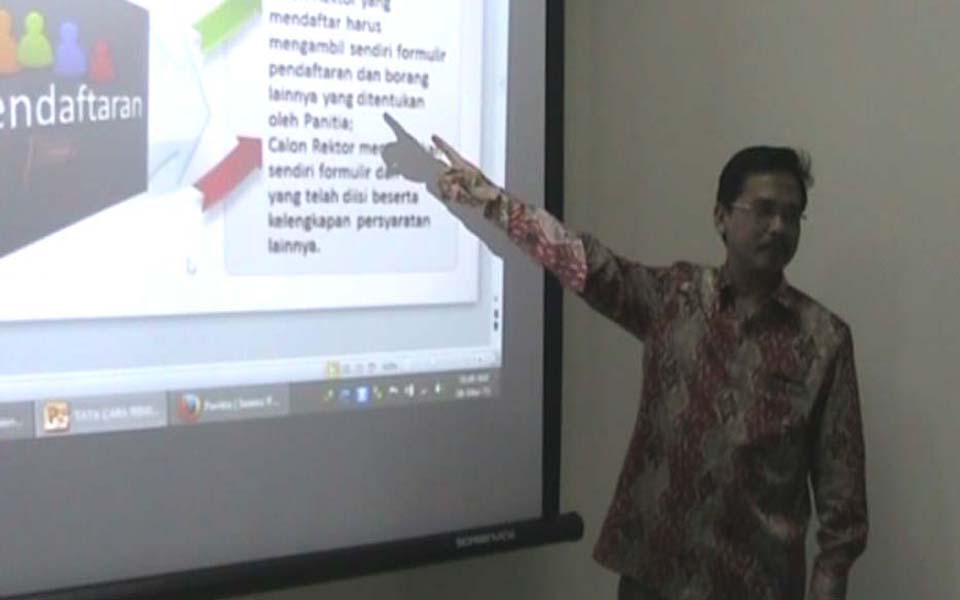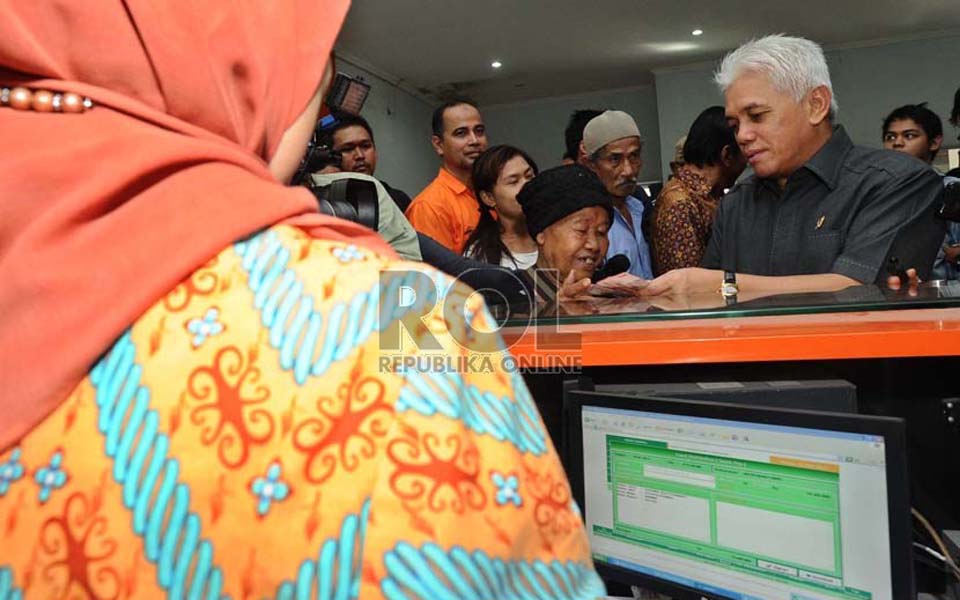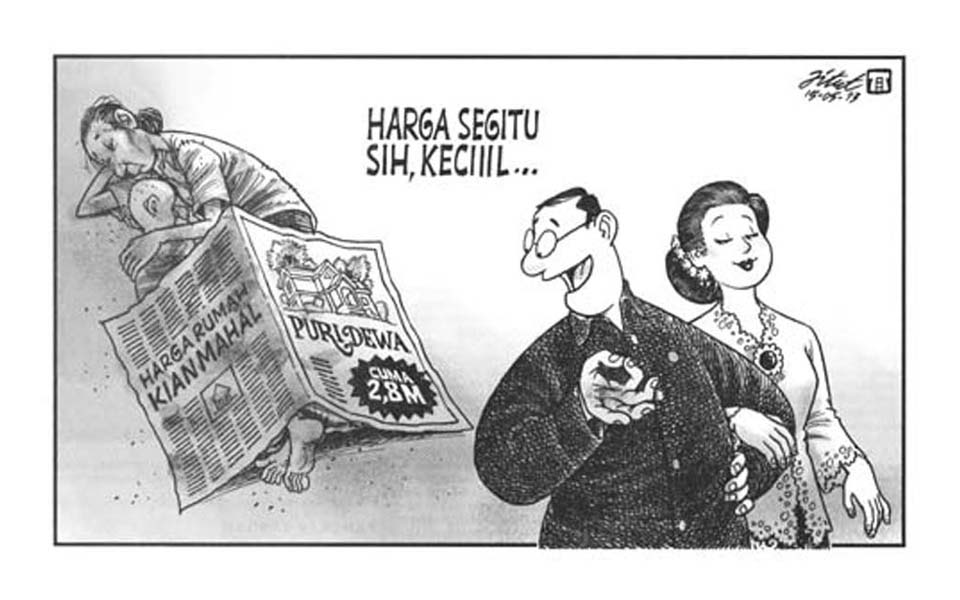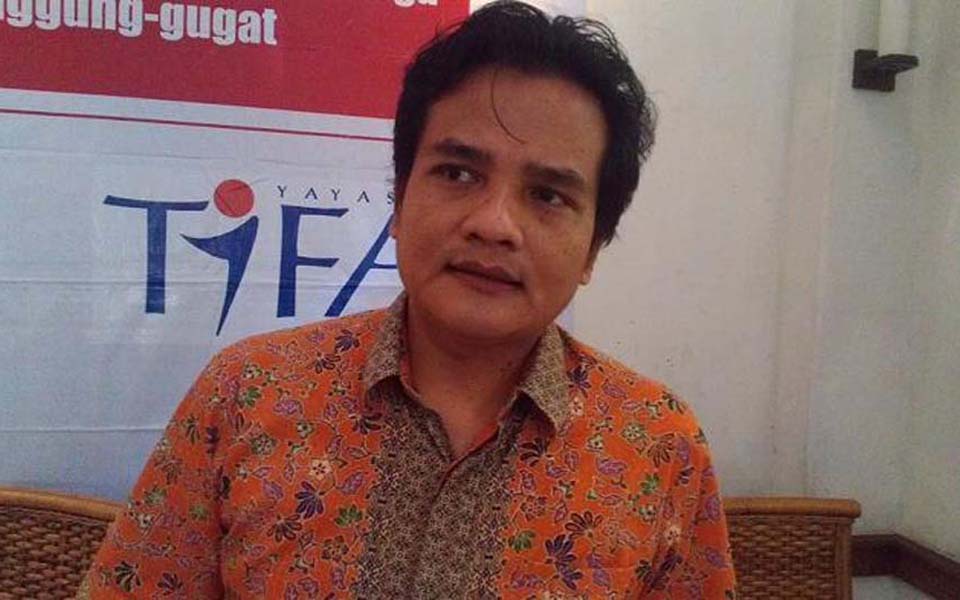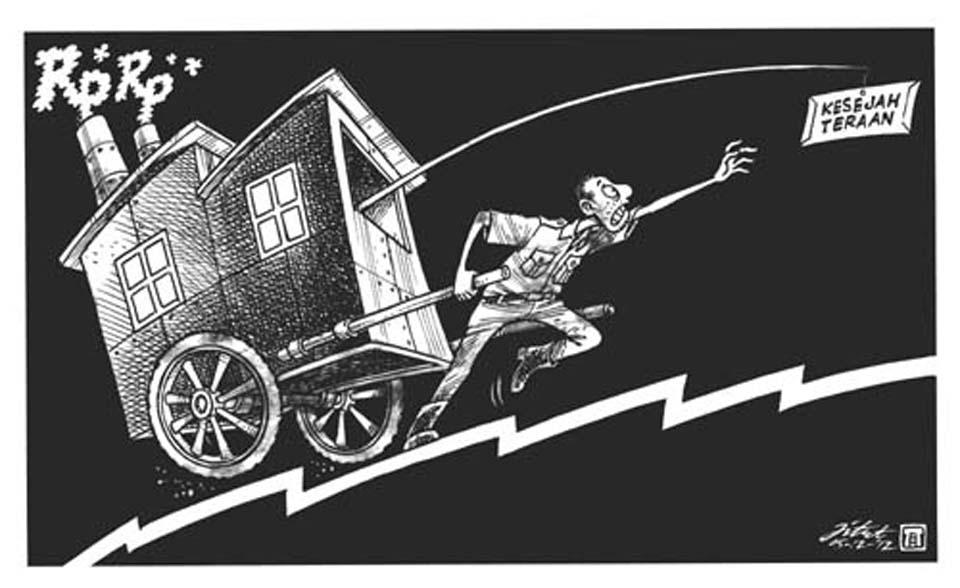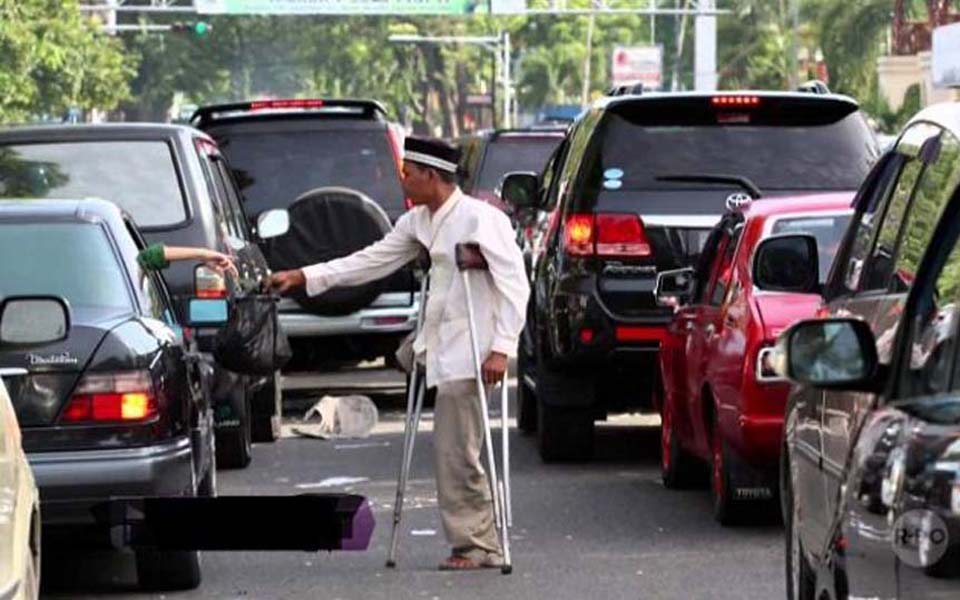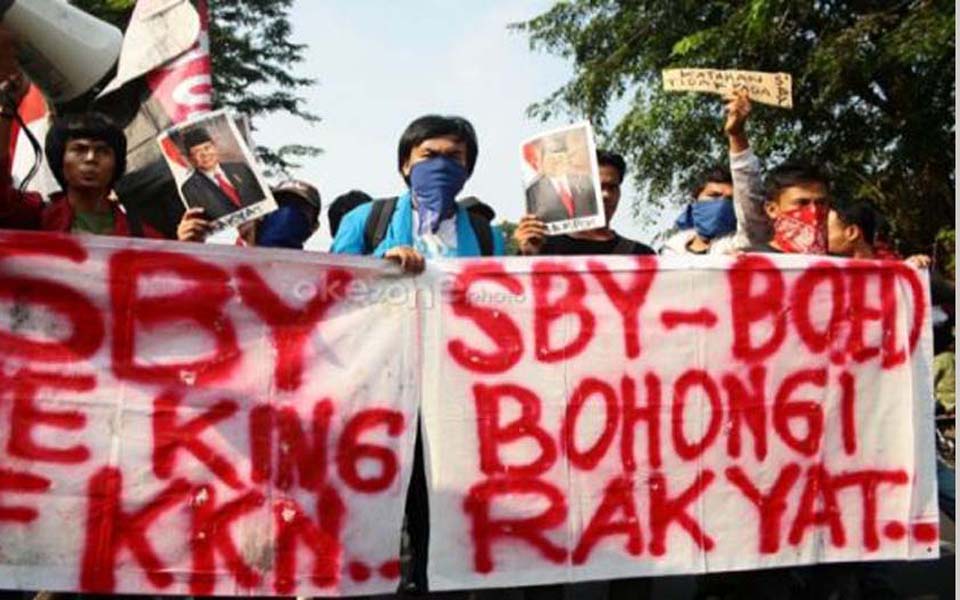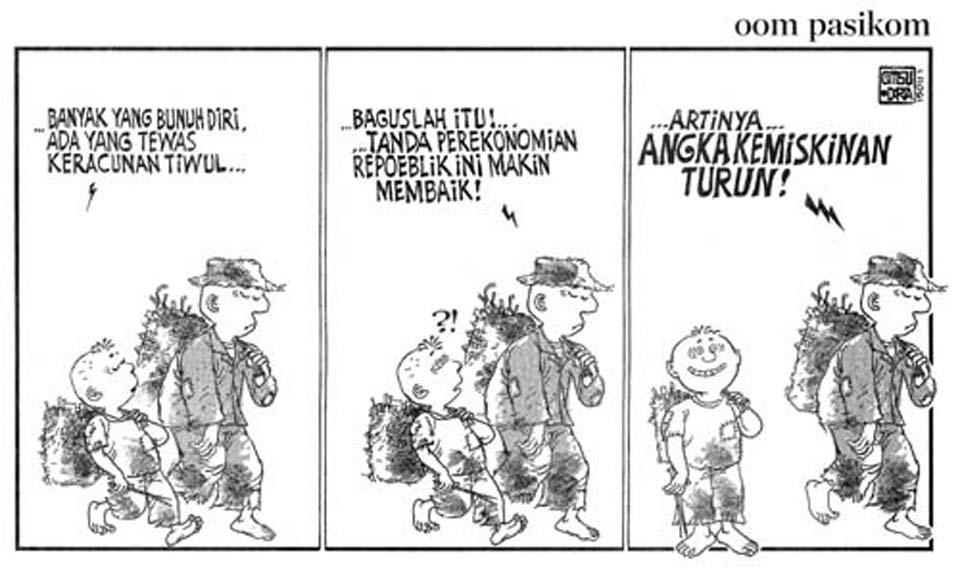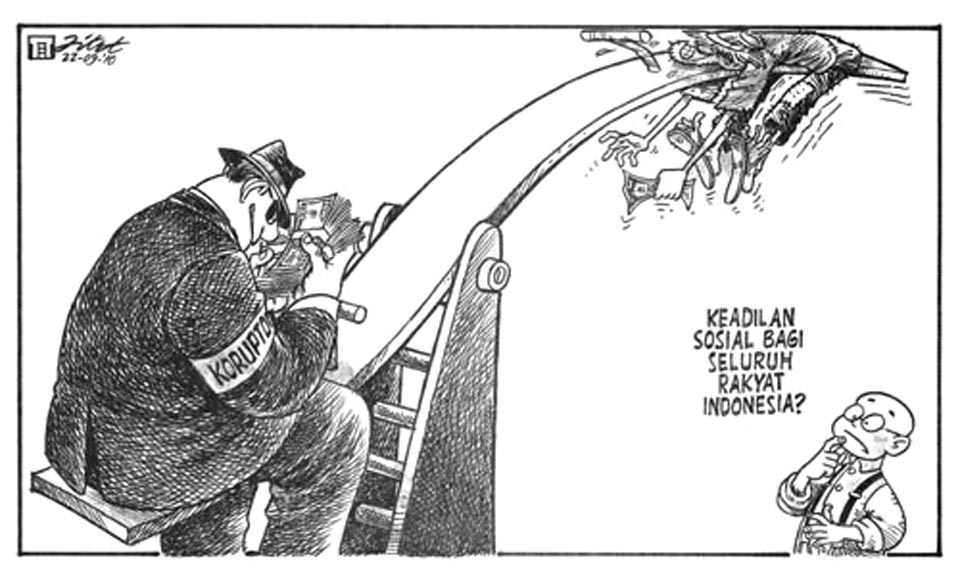According to a labour observer, although wages continue to rise, the real value of workers’ wages has declined so workers are being impoverished structurally.
Poverty & Social Inequity
Displaying 21-30 of 48 Articles
October 2013
July 2013
Jakarta – Temporary Direct Assistance to the Public (BLSM) could be ineffective because it may not be spent as intended. Using the Direct Cash Assistance (BLT) scheme in 2008 as a reference, 60 percent of the money allocated was used to pay off debts and the rest spent on cigarettes
May 2013
Newspaper reads: Housing prices continue to rise, Palace of the Gods only 2.8 billion [rupiah].
Man: Is that the price, its so low...
December 2012
Jakarta – The growth in the number of wealthy individuals over the last 10 years has been spectacular, increasing by five fold or by 500 percent. This can be seen from the total wealth and bank deposits that continue to increase.
August 2012
Jakarta – Economic growth, which reached 6.4 percent in the second quarter of 2012, is largely being enjoyed by the middle- and upper-class, because it is not quality growth.
Jakarta – In the midst of a global crisis, Indonesia’s economic growth recorded a positive result. Economic growth for the second quarter of this year reached 6.4 percent compared with the same period last year.
April 2012
Khaerudin, Nasru Alam Aziz, Jakarta – The disparity and gap between those who are rich and poor in Indonesia is clearly illustrated by data on the control of national productive assets.
January 2011
Kid: Lots of people are committing suicide, others were poisoned after eating tiwul...
Man: That’s good, it’s a sign the country’s improving... it means poverty rates are going down!
September 2010
Man: Social justice for all Indonesians?
Widespread corruption, which pervades almost every aspect of Indonesian life, is estimated to cost the country’s economy around Rp50 trillion (US$5.6 billion) a year or around 1.4% of GDP annually, just over half the US$9 billion allocated to government poverty alleviation programs in 2010.





